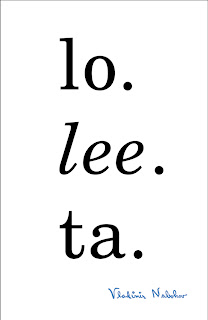A Case of Exploding Mangoes by Mohamed Hanif is a pleasure
that lasts long after the plane carrying Haq crashes in the desert thereby
melting all the ripe mangoes and Baby O reading Marquez’s Chronicle of A Death Foretold. This ambitious novel can safely stand beside Catch 22. A dark tale of
conspiracies, foreign policies and history that remains unforgiving and yet
indifferent to Pakistan
and her people. Afghanistan-Pakistan-USA-USSR circle is where President Zia and
his regime established itself and prospered (I hope it is not a wrong word)
that ultimately proved too much for the people of Pakistan . Hanif is a smart
chronicler albeit a darkly humorous one.
General Zia ul-Haq seized power in a military coup in 1977
and drove the country to embrace Islamic values at the cost of democracy and
equality, thereby changing the entire texture of Pakistani life. There were
public flogging and stoning and hangings. Some people approved and some were
appalled. The Soviet invaded Afghanistan
in 1979, cold war ensued between USA
and USSR , Pakistan became the lynchpin, the main anchor
for America
in its war against the commies. Refugees flooded into Pakistan and
covert aids from US and Saudi to Afghan mujahideen got underway through Zia and
his regime. Things ultimately spiralled out of control and so far we have seen
the consequences.
Even if one is not aware of the context against which the
novel stands one can enjoy the playfulness of the characters here. Hanif
creates a language in the narrative of the novel that regales with funny
one-liners and wisecracks and paints its various characters with queer warmth
and even affection. Zia becomes a ruler who is surprised everyday to see
himself as the most powerful man in the country. The probing finger of Saudi
doctor inside his rectum in his office helps to stress the facts.
The main protagonist, if we can call him that, Under Officer
Ali Shigri, leader of "Silent Drill Squad", is a boy from hill who
wants to avenge the death of his father but he is hardly a Hamlet. He is insane
all right, since he wants to kill Zia himself, he is a good friend, a lively
companion, even a lovable scamp. The tint of irony and acute awareness of the
world around him saturate his whims and ultimately grants him life at the end
of the novel.
There is an American drill instructor Lt. "loot"
Bannon who hatches the plan to kill Zia with the help of Shigri and Under Officer
Obaid "Baby O", a part time lover of
Shigri, a part time pilot and a full time poet. There is Zainab—blind
rape-victim whom Zia sentences to death, through stoning, for adultery, and who
curses Zia. And there is a black crow who carries the blind woman’s curse to
Zia on that fateful day when he dies.
One of the most original scenes in the novel is the party
hosted by American ambassador at his place on the 4th of July.
People, both American and Pakistani, turn up there wearing flowing turbans,
tribal gowns and embroidered shalwar qameez. One of the guests at the party is
OBL of ‘Laden and Co. Constructions’, a lanky man with flowing beard, and the
only man wearing suit. OBL is thoroughly ignored by everyone and the one
corporal who makes fun of his suit chokes on his own beer. This OBL will not
let these Americans forget him ever. Hanif creates one of the tongue-in-cheek
moments that makes the novel such a joy to read.
After the Soviets withdrew from Afghanistan , and US interest waned,
the Taliban rose. A decade later 9/11 happened and Americans woke up to this
OBL who may or may have come to that or any of the party hosted by Americans.
But that is not the point. That the terror attack in America
would come out of the cold war remains an ignored fact, USSR broke down
and so did American swagger.
The comedy in A Case of Exploding Mangoes is the device that
makes the narrative go forth. The slogan at the sweepers office reads ‘Cleanliness
if half the faith’, since most of the sweepers in Pakistan are either Hindus or
Christians. Shigri wonders - What are you supposed to say when someone knocks
at your prison door? Or - Is one allowed to open ones eyes in a blindfold?
All the funny lines in the novel hide the sad facts. The
fact that a country of 130 million people is governed by an Army General who is
paranoid about his personal safety, the funny thing is he is being eaten away
by worms from inside while he is worried about stray bullets or poor widows.
The fact that religion has taken over the democratic/secular culture, the funny
thing is no amount of sacred verse can reveal the truth to a man who has fallen
in love with his own greatness. Discovery of an unscathed copy of Quran from
the crashed plane that killed Zia makes us believe that Islam can survive
without the piety of such despots.










